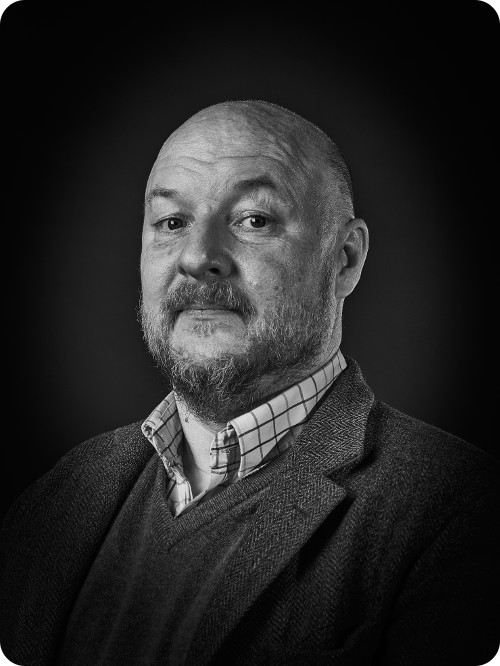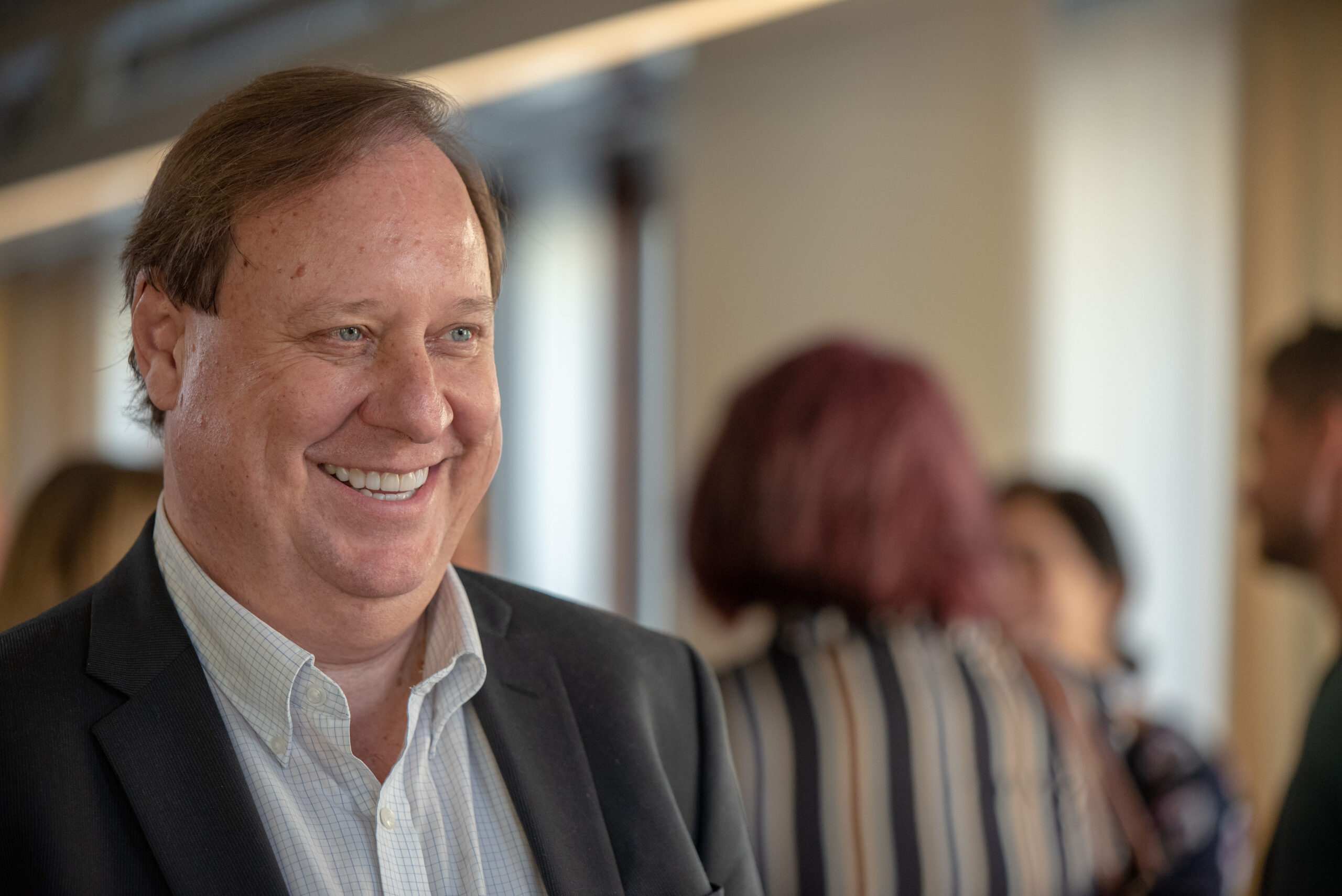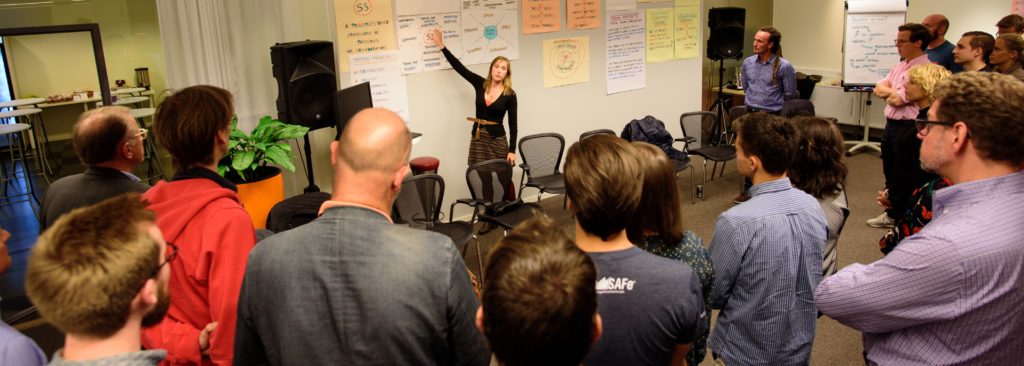We’re just two weeks away from the launch of Leading Complexity 2025, and we couldn’t be more excited to welcome the amazing group of participants who’ve signed up from around the world. This year marks the fourth season of the program — and the theme feels more urgent and relevant than ever: In 2025, we’re
Continue readingMichael Göthe
How to Lead—and Not Be Led—by AI in Complexity
A conversation with long-time Crisp collaborator Jonathan ReamsSummary (Abstract) AI is accelerating our tools—and our context. In this Leading Complexity Podcast episode, Jonathan Reams argues that leaders must grow their inner capacity at least as fast as AI evolves, or risk being led by the very systems they deploy. We explore how adult development, complexity
Continue readingLeveling Up Leadership: A 5-Year Journey Boosting Engagement at a Game Studio
How a long-term leadership program helped build stronger leaders, increase engagement, and boost collaboration across teams. The Challenge: When Engagement Slipped, Leadership Stepped Up When the executive team at a large game studio noticed a dip in employee engagement in their biannual survey, they took it as a signal, not just a statistic. They knew
Continue readingLeading Complexity – Year 4: Navigating the Age of AI (and Everything Else)
Three years ago, we launched the Leading Complexity Program with a simple but urgent question: How do we lead when the world is changing at an exponential pace? Organizations everywhere were feeling the pressure of complexity—messy systems, rapid change, and no playbook for how to lead when everything’s connected, changing fast, and increasingly unpredictable. As
Continue readingMob Programming with AI: Inside a High-Performing Team’s Journey
Introduction What happens when you combine a passionate development team, a dash of Tesla-inspired thinking, and the principles of Mob Programming, with AI as an active participant? At Traton-Scania, the AI-Enablement team is doing just that, transforming how they build software and collaborate. This is their story. Meet the Team The AI-Enablement team at Scania
Continue readingThree Strategies for Leading in Complexity
Summary of my talk from Agile Sverige 2025 A few years ago, I heard the quote: That felt true then—and it’s even more true now. After co-hosting the LeadingComplexity.com program for several years with over 30 world-class thought leaders on the topic of leading in complex environments, I’ve come to see more clearly what leadership
Continue reading1-2-4-All and Meetings People Actually Want to Attend
Have you ever found yourself stuck in a meeting where one person does all the talking… and everyone else just tunes out? Or where it’s so open-ended that nothing really gets done? Even with smart people in the room, the best ideas often never get heard. That’s precisely the problem Liberating Structures were created to
Continue readingInterview with Simon Wardley
We proudly present Simon Wardley, one of this year’s teachers, in our Leading Complexity Program starting September 2023. Here is a summary of the interview below. M: Hi, Simon. It’s great to have you on the program this year. Could you briefly say who you are for those who don’t know you? S: I am
Continue readingInterview with John Cutler on Navigating the Everyday (Beautiful) Mess
We talked to John Cutler, one of our master class teachers in this year’s leading complexity program. John has a background in product management and UX, and is a Senior Director of Product Enablement at Toast. We discussed “complexity,” What it is, what the implications are for leaders today, and the topics of his talk:
Continue readingSonja Blignaut – Leading in Complexity by Curating Context
Throughout the Leading Complexity program, we have had the opportunity to learn from the best thinkers in leadership and complexity. One of them Sonja Blignaut. As a meteorologist, she has a fascinating natural sciences background, giving her a unique perspective on human systems. In her session, she shared some of her latest thinking, which she
Continue readingStephen Bungay and the Art of Leadership
Summary of Stephen Bungay’s session in the Leading Complexity Program 2022. Leadership and direction setting are essential components of any successful business strategy. One of the very best thought leaders on business strategy that is well familiar to Crisp is one of last year’s Leading Complexity keynote speakers Stephen Bungay. Not only is he an
Continue readingInterview with Doug Kirkpatrick
M: Hi, Doug. Great to have you in the Leading Complexity program for the fall. You have been a guest with Crisp before, but for those who don´t know you, who are you? D: Thanks, Michael. I am Doug Kirkpatrick. I helped start Morningstar over 30 years ago here in Northern California. Morningstar organized around
Continue readingInterview with Dave Snowden about Leading Complexity
Watch the video (5 min) in our LinkedIn post.
– Hi Dave. Good to see you again. For those who don´t know you. Just briefly, who are you?
– Dave Snowden. I run the Cynefin center. And that focus on the application of Natural Science to social systems.
– So why should leaders care about complexity?
– Complexity just is. So complex adaptive systems are an integral part of the world, and they deal with systems where you can’t plan specific goals. It is what we sometimes call the unknowable, unknowables. So basically, a complex system is deeply entangled, it’s highly uncertain, it’s the reality of the world we live in, and then we have to learn to manage in it. But most of our management tools were not designed for it.
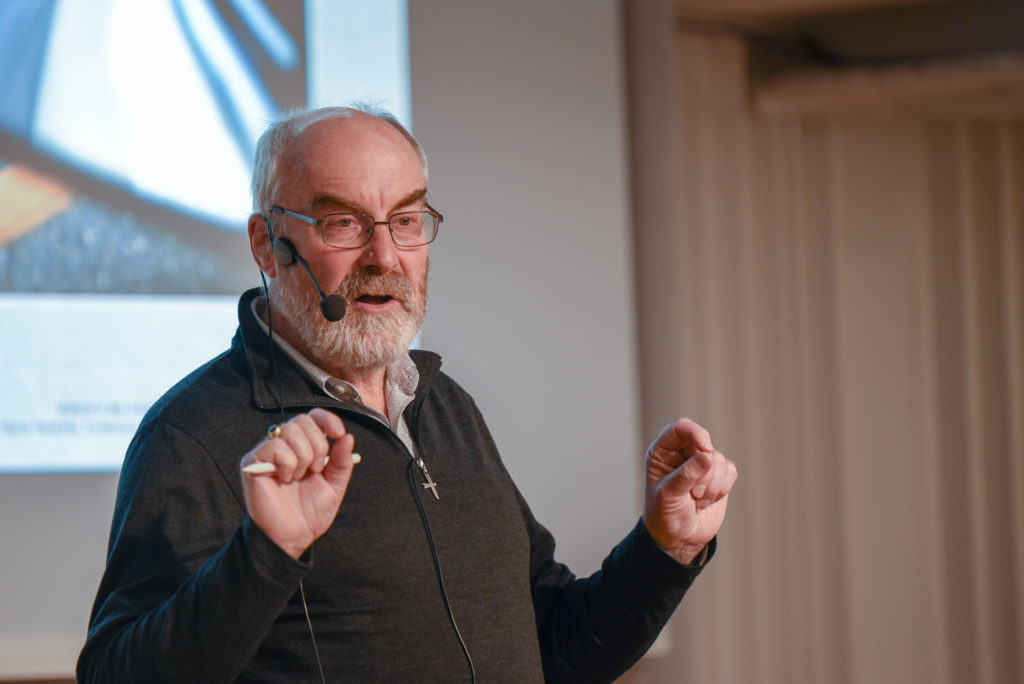
Doug Kirkpatrick, CFO who turned management innovator
Interview with Doug Kirkpatrick, startup team member of Morning Star and co-founder of the Morning Star Self-Management Institute. Famous for being built on their principles of self-management, which has led to that Morning Star is today the largest tomato processing in the world. Today Doug has left Morning Star to spread his experience as a speaker, author, and consultant.
In his book, Beyond Empowerment, Doug tells the story of how Morning Star became an example of true empowerment. He tells us how they went beyond traditional ways of delegating (empowering) and creating a self-managed and truly empowered company.
I found Morning Star to be an intriguing and fascinating story! I have been following the company for quite a while and recently had the fortune to meet with Doug. During one of our discussions, he shared the fascinating story and his experience as one of Morning Star’s original colleagues.
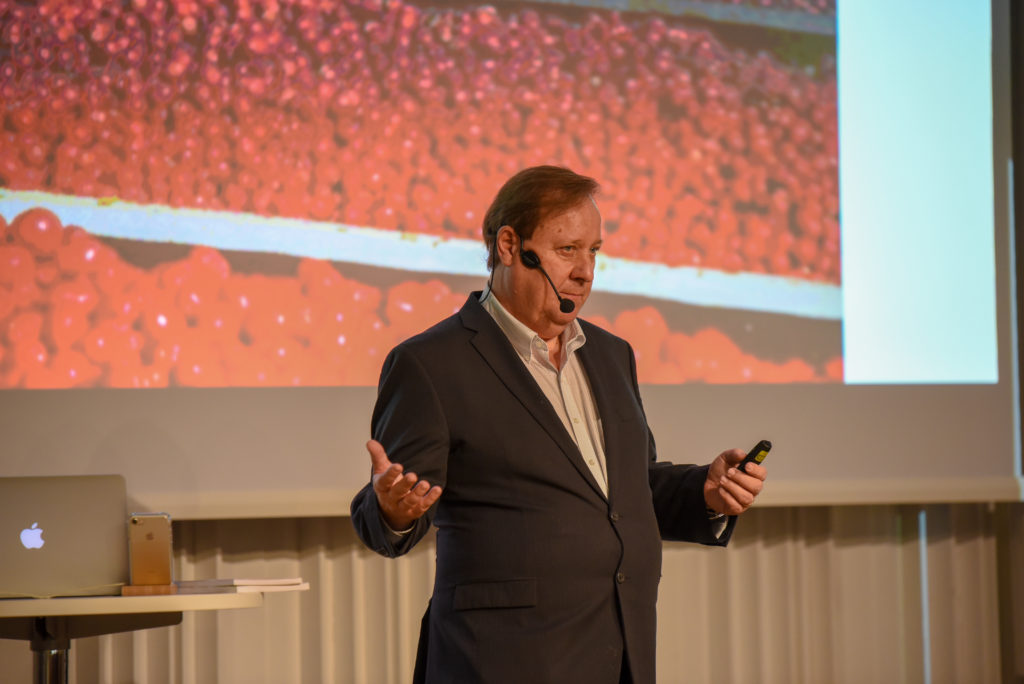
To learn how you can operate a large successful company in a very agile way based on self-management and a few simple but powerful organizational principles, then continue reading.
Continue readingPair Coaching
Just like pair programming, there are a lot of benefits to pair coaching. In fact, the positives – two pairs of eyes, direct feedback, observation from two different perspectives – are even stronger motivators for pairing up when coaching! We see a lot of pairing when it comes to teaching classes, and larger facilitations, why not apply the same benefits to coaching as well!
The coaching context
In an individual coaching session, there are a lot of things going on. First, there is the content of the conversation. Then there are the thought processes and emotions within both the coach and the person being coached. As well as the communication and dynamics of the relationship between them. This is already a complex situation that can benefit from an added perspective. Imagine the complexity when we start talking about team or group coaching.
6 Tips towards Business Agility
Agile, and Agile methods, like Scrum and Kanban, have had tremendous success over the past few decades, but still, most organizations are not getting the value and expected outcomes from their Agile initiatives. A big reason is that people often confuse Agile methods, or applying the methods in one department, with agility, which means having the ability to adopt these methods and deliver value to both the business and customers. Having that organizational ability is the essence of Business Agility. You can also refer to it as scaling Agile to the whole organization.
As co-organizer of the yearly Agile People Sweden conference, we have recognized that this is a current challenge for most organizations today, and hence the Business Agility is the theme for this year´s conference.
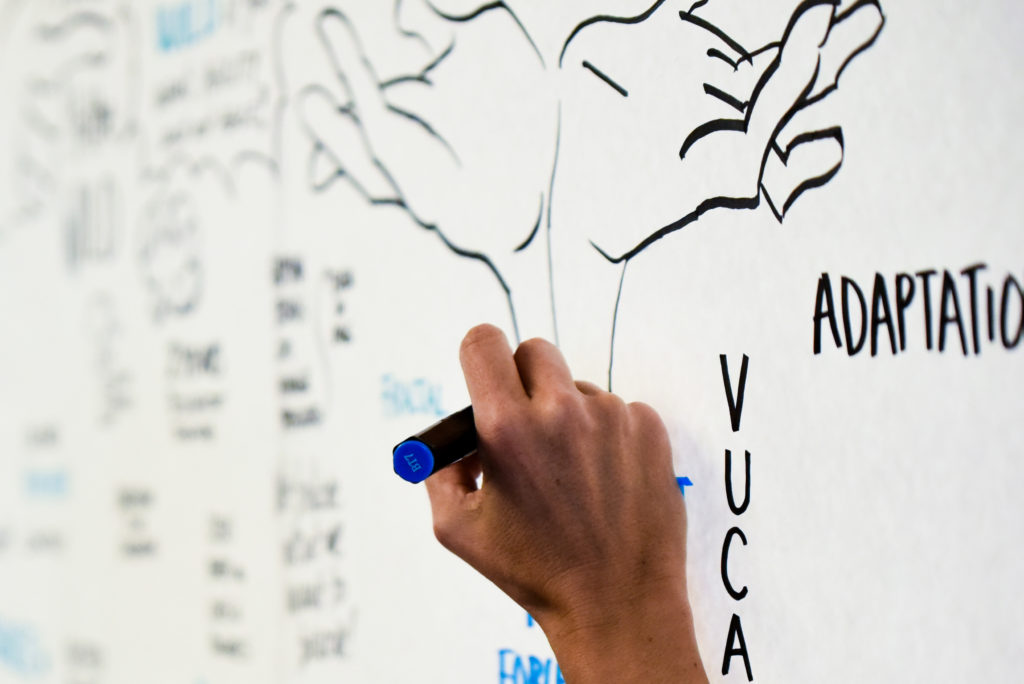
I had the opportunity to be interviewed by Kari Kelly from Atypical Workplace LLC. It resulted in 6 tips for how your organization can create value through Business Agility.
Continue readingMeet Enspiral, Crisp’ long-lost cousin
Meet Enspiral, with the inspiring purpose of “More people working on stuff that matters”. This autumn I finally got to meet Joshua Vial from Enspiral when he and his colleague Susan Basterfield visited Stockholm for keynoting at the Agile People Sweden Conference. This was the first time Joshua visited us but Susan, I had already had the privilege to get to know last year when we hosted a workshop at Crisp on the Enspiral European tour.
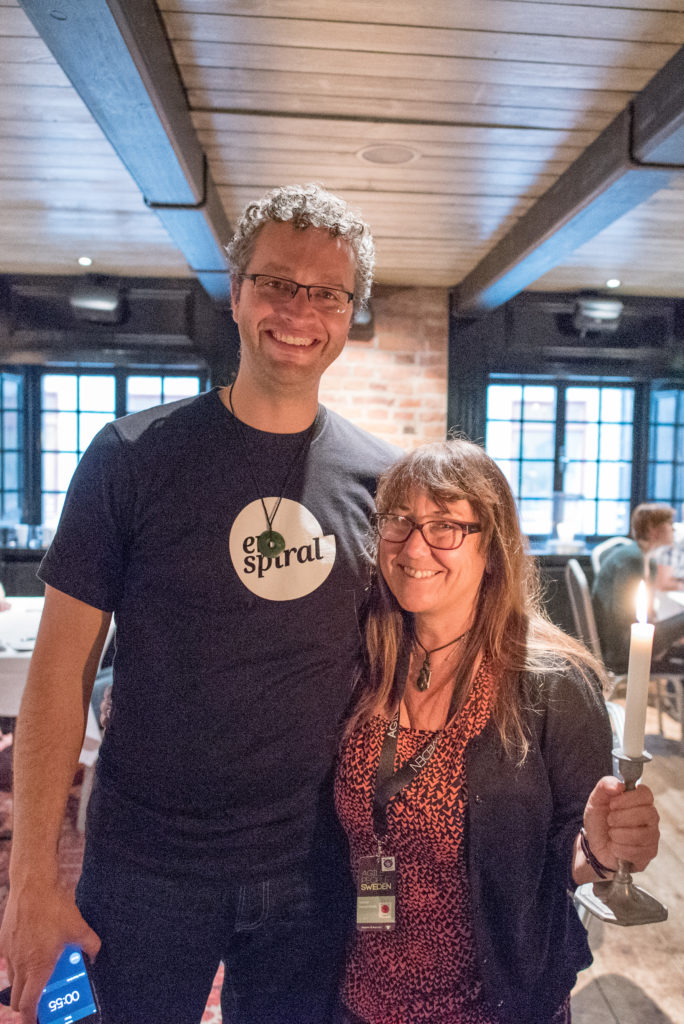
After the conference, I had a chance to sit down with Joshua and Susan to chat about Enspiral, social entrepreneurship, doing things that matters and the future of work. As we sat down and chatted and realized that we are a tribe of changemakers separated at birth, or at very least sharing latent strands of DNA. How else can you explain the exquisite similarities of two entrepreneurial collectives from the polar opposites of the planet? Crisp and Enspiral are like long-lost cousins. We are both two companies with a belief that there are better ways of organizing and leading work than the traditional way.
These new ways are based on principles of self-management, agility, openness, and participation. We believe organizations like this are more rewarding and purposeful for the people working in them. This will lead to that people’s potential are freed up to do more good and impactful things in the world.
Interview with Dave Snowden, “What´s next for agile”
I had the opportunity to make an interview with Dave Snowden as he visited Crisp for his latest Master Class end of November, titled “What´s next for agile”. We explored the topic of What´s next for agile, new updates to the Cynefin model, now called Cynefin liminal. Check out the video below to of my interview with Dave (14 min).
Agile is increasingly becoming commodified and what are the opportunity for smaller Agile companies and anyone believing in the original Agile movement? (0:20). h “The key now is to produce new high energy efficient, radical, high value, innovations around the core of what Agile has become”
Consent Decision Making – How to take effective decisions collaboratively
In this series of blogs, I am writing of my experience of practical applications of Sociocracy 3.0 (S3) patterns in teams and organizations. In the first blog, I wrote about My journey of finding and applying Sociocracy 3.0 (S3). There are many cool patterns in S3 that I have been using with great success as an Agile organizational coach so far. In this article I will cover the pattern of Consent Decision Making:
In contrast to consensus which focuses on reaching an agreement, consent focuses on intentionally checking for reasons not to do something a certain way. An objection is an argument that reveals why doing (or continuing to do) something, impedes or misses an opportunity to improve flowing value somewhere in the organization. Reaching consensus is often very time consuming and has the risk that one single person can block the whole process when unanimity is sought. Continue reading
The Future of Work
The Future of Work is already here, it is just only unevenly distributed.
There is a crisis in the world of work. The pace of change in our environment is faster than the internal change in most organizations. Many organizations are struggling to keep up and are risking becoming obsolete. Gallup’s report on engagement crisis with only 32% of US workforce and 13% of the worldwide workforce engaged. Companies in the S&P 500 Index in 1958 stayed in the index an average of 61 years but has fallen to 18 years in 2012. Why is this?
When it comes to our work-life most of our organizations are still designed based on principles from the industrial age. Separation of thinking, planning, and management from the work. Organizations are designed to be top-down hierarchical and inside out rather than outside-in, customer-centric, and decentralized. There is mechanistic view rather than an organic, natural and Agile view of organizations.
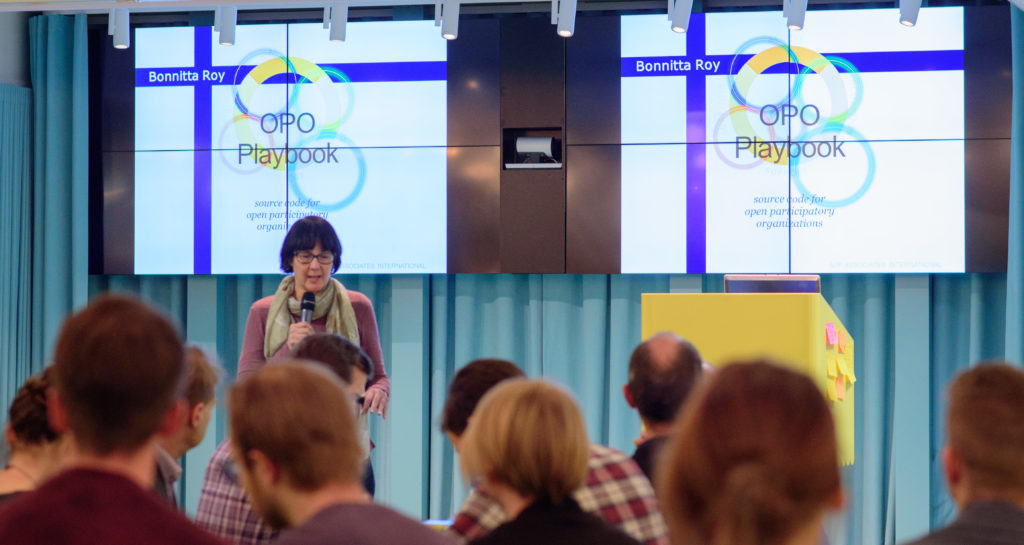
This new complex world will put completely new demands on leadership, organizing and just everyday living. We are living in truly exciting times. How can we create organizations that are fit for the future and more human? How can we re-invent organizations so that we will free up people’s potential for doing good? Many of these organizations are also based on triple bottom line principle: “Profit, People, and Planet”. This is my passion and I am super excited about it right now. Continue reading
Trading control for great products – the Telia TV team example
Adapting to accelerating change
In a world where the speed of change seems to accelerate almost exponentially, it is only natural that an organization’s way of working must be constantly challenged and improved – especially in the highly competitive media business.
This text, which was inspired by winning an award (we will return to that), is the outcome of a joint effort between Michael Göthe, Agile Coach at Crisp, and Jens Abrahamsson, Agile Coach at Telia Company’s TV & Media Backend department. In it, we describe parts of the always-ongoing journey towards a more lean and agile way of working at the Telia TV team.
As always when looking back at a complex change process it is not possible to copy what we did but our intention is to share useful learnings, practices, and tools that can inspire you on your change journey, in your context.
The iZettle Example: Decentralized Tech Development In Practice (Case Study)
Don’t stand in the way of great employees.
That’s one of the operational mantras that guide the finance technology company iZettle.
Two others are “Keep the startup spirit strong” and “Stay adaptable to changing market needs.”
In this blog post, we share some of the things we are implementing and tweaking at iZettle to keep producing great results and attracting in-demand, talented developers. My role has been to assist the tech development organization in making this work.
(Another blog post coming soon will cover the transformation of making the whole company agile, while this post focus on the practices that are put in place to keep a high performing, decentralized tech development organization at iZettle.)
Let’s begin by facing the reality of fast-growing startups.
The organizational challenges for most fast-growing startups
Most startups want a flat organization to keep their entrepreneurial juices flowing, but when new employees join in a steady stream there eventually comes the point where the founders or upper management feel overwhelmed by chaos.
Things get confusing.
Employees aren’t seen.
No one seems to know what’s going on.
What usually happens for most start-ups at this point is that bureaucracy processes start piling up. Layers of management are added, and project managers are introduced to coordinate the chaotic environment. And so are written reports for managers to send to upper management, and silos are building up between different departments. And decisions are taken somewhere else.
And then what happens?
Usually, entrepreneurial enthusiasm suffers and so does talent motivation and speed of innovation.
And that is exactly what iZettle wants to prevent.
But that is easier said than done when a company grows like a wildfire.
One thing that improves your personal life – and makes you a better value creator
As a high-performing tech professional, it’s useful to constantly fine-tune your ability to add value.
For example, you might ask yourself at work:
What is the one thing we can change in our product, service or in the way we work together that can bring more value to our customers or the team?
This philosophy of looking for things that can add value can also be used for your personal and professional development.
To give you some inspiration, here are some of the real life small changes and habits that our team members at Crisp have made that have added tremendous value to our personal and work lives.Continue reading
Warning! These 6 Pitfalls Will Slow Down Your Organization

You have probably read about “at scale” implementations, activity based offices, globally distributed teams, SAFe, Agile transformations and outsourcing. Beware. Danger can be lurking beneath the surface of these popular phenomena.
My journey of finding and applying Sociocracy 3.0 (S3).
During my ongoing search to find new and improved ways to grow more human centric, high performing workplaces I was introduced to Sociocracy and Holacracy in 2012. I was immediately intrigued by the underlying principles and fundaments, especially with sociocracy and have been experimenting ever since. With the recent emergence of Sociocracy 3.0 I’ve turned my attention towards learning about and experimenting with it’s modular, optional framework of principles based patterns, with fantastic results.
S3 is a free and open, principles based framework of patterns for people wishing to collaborate more effectively and benefit from agile principles at scale, regardless of their chosen approach to product development and service delivery. It provides a rich variety of compatible options to choose from and adapt, according to unique context and needs, building on sociocratic practices and integrating principles from Agile / Lean to dynamically steer and evolve organization.
Why is it so difficult to bring Agile and Lean to the organisational level?
Are you also sensing something is wrong with today´s organisations? If you have been working with Agile or Lean for a while you typically notice that the early wins and benefits on a smaller scale will very soon hit it´s limits. Maybe you have been struggling with getting expected results from your Agile and Lean transformation initiative. Or you feel it is going painfully slow. In this blog I am going to put some light on what is wrong and what to do about it. My intention for you is to better understand the friction we are sensing in today’s organisations and what is getting in the way from creating truly Agile Organisations.







